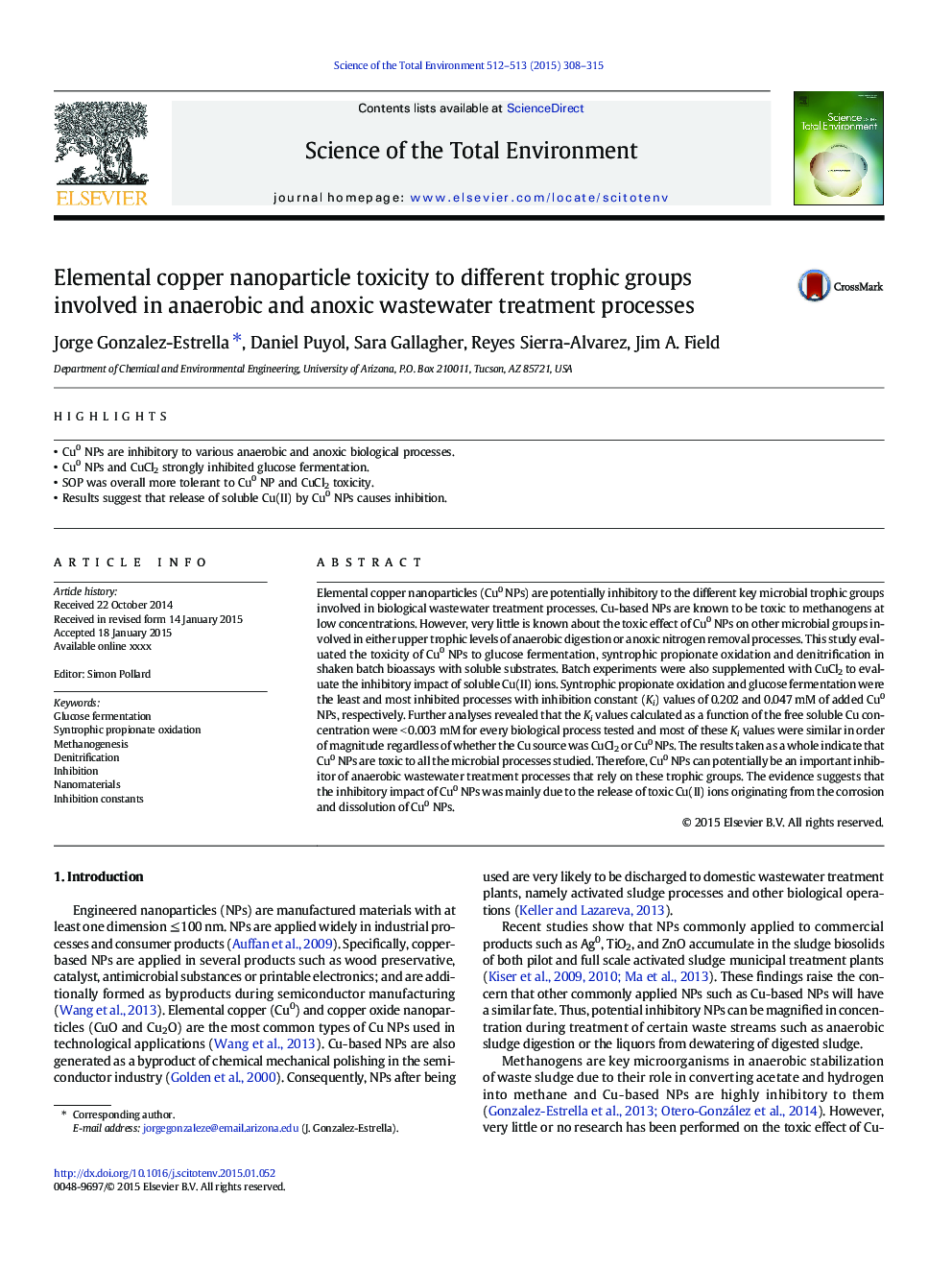| Article ID | Journal | Published Year | Pages | File Type |
|---|---|---|---|---|
| 6327205 | Science of The Total Environment | 2015 | 8 Pages |
Abstract
Elemental copper nanoparticles (Cu0 NPs) are potentially inhibitory to the different key microbial trophic groups involved in biological wastewater treatment processes. Cu-based NPs are known to be toxic to methanogens at low concentrations. However, very little is known about the toxic effect of Cu0 NPs on other microbial groups involved in either upper trophic levels of anaerobic digestion or anoxic nitrogen removal processes. This study evaluated the toxicity of Cu0 NPs to glucose fermentation, syntrophic propionate oxidation and denitrification in shaken batch bioassays with soluble substrates. Batch experiments were also supplemented with CuCl2 to evaluate the inhibitory impact of soluble Cu(II) ions. Syntrophic propionate oxidation and glucose fermentation were the least and most inhibited processes with inhibition constant (Ki) values of 0.202 and 0.047Â mM of added Cu0 NPs, respectively. Further analyses revealed that the Ki values calculated as a function of the free soluble Cu concentration were <Â 0.003Â mM for every biological process tested and most of these Ki values were similar in order of magnitude regardless of whether the Cu source was CuCl2 or Cu0 NPs. The results taken as a whole indicate that Cu0 NPs are toxic to all the microbial processes studied. Therefore, Cu0 NPs can potentially be an important inhibitor of anaerobic wastewater treatment processes that rely on these trophic groups. The evidence suggests that the inhibitory impact of Cu0 NPs was mainly due to the release of toxic Cu(II) ions originating from the corrosion and dissolution of Cu0 NPs.
Keywords
Related Topics
Life Sciences
Environmental Science
Environmental Chemistry
Authors
Jorge Gonzalez-Estrella, Daniel Puyol, Sara Gallagher, Reyes Sierra-Alvarez, Jim A. Field,
